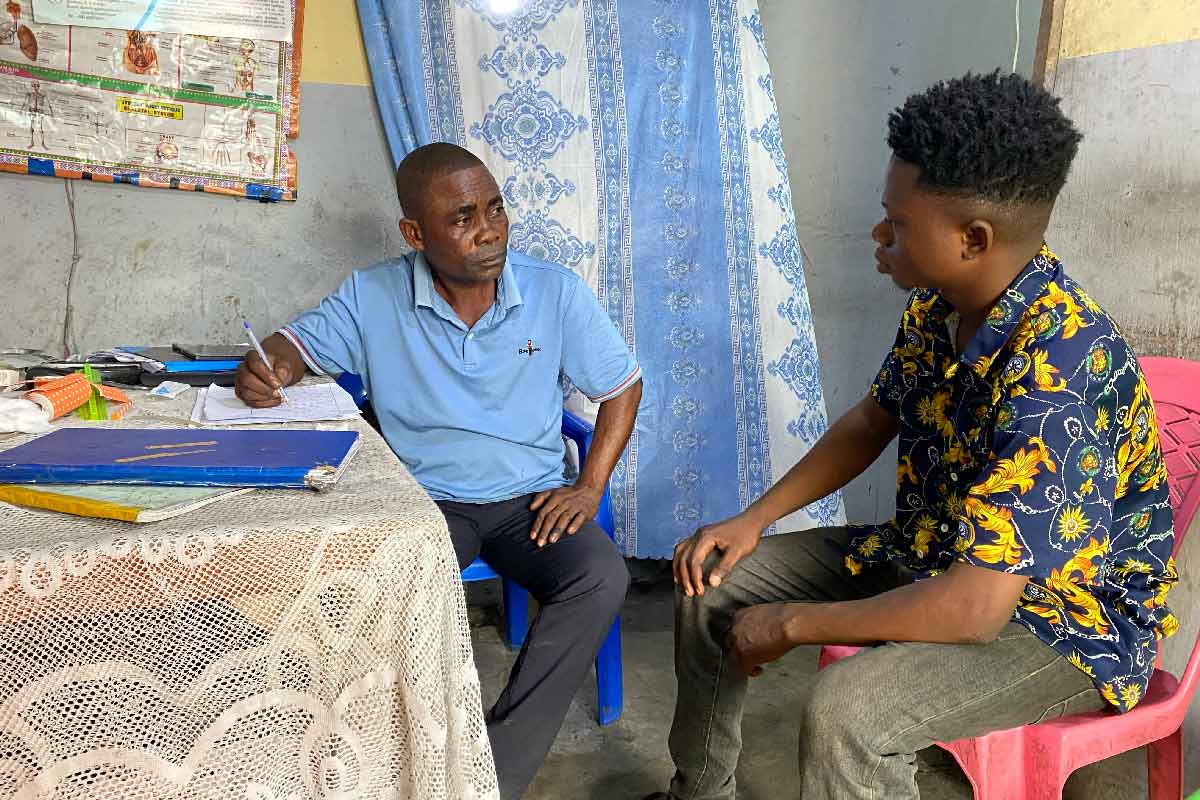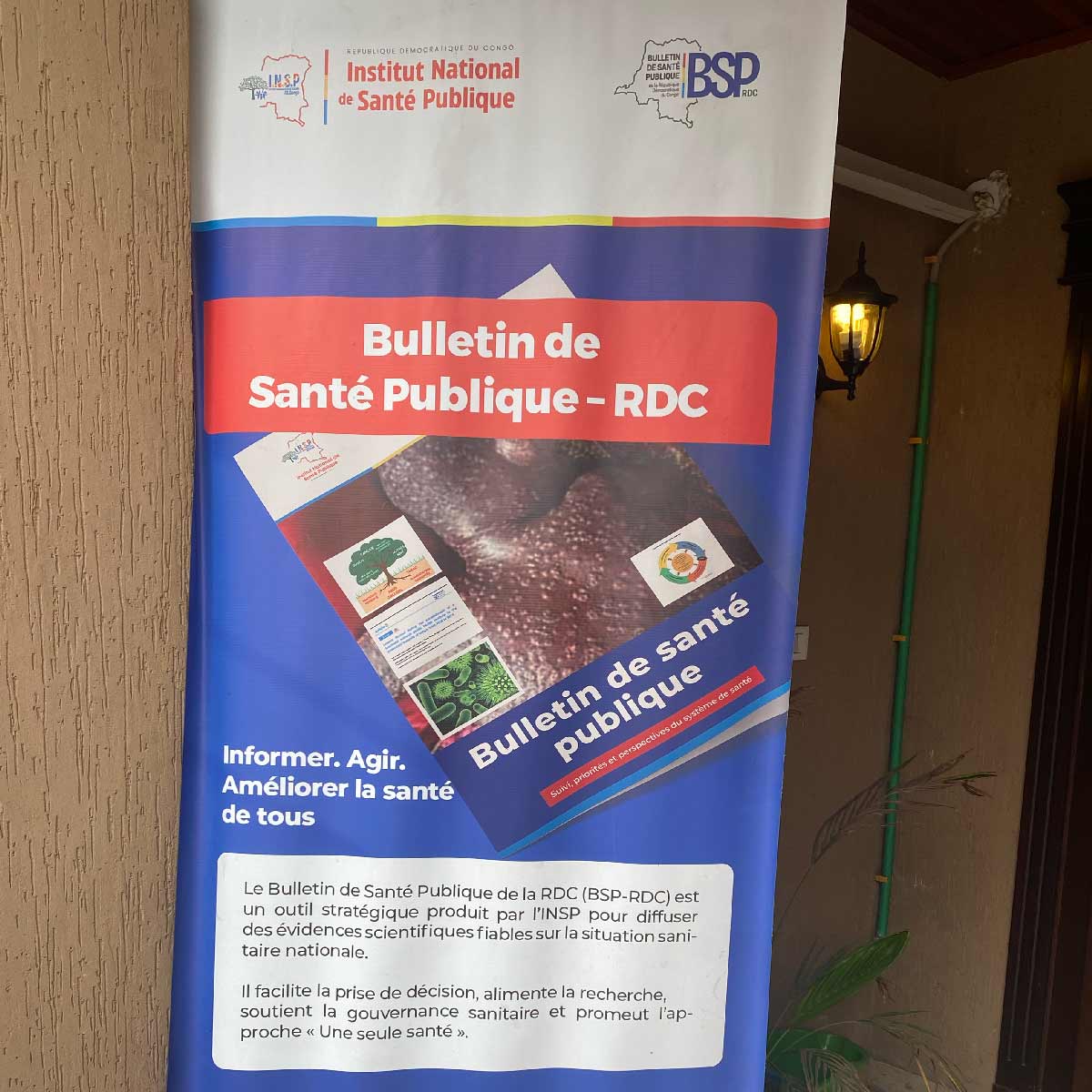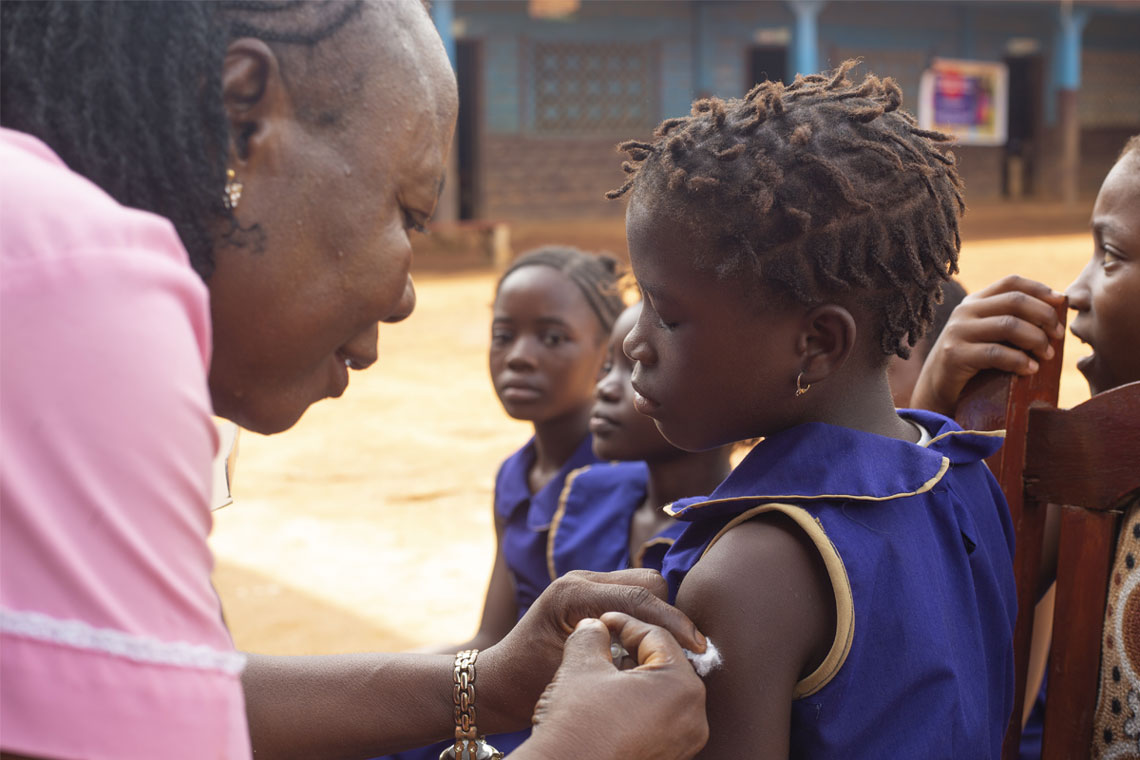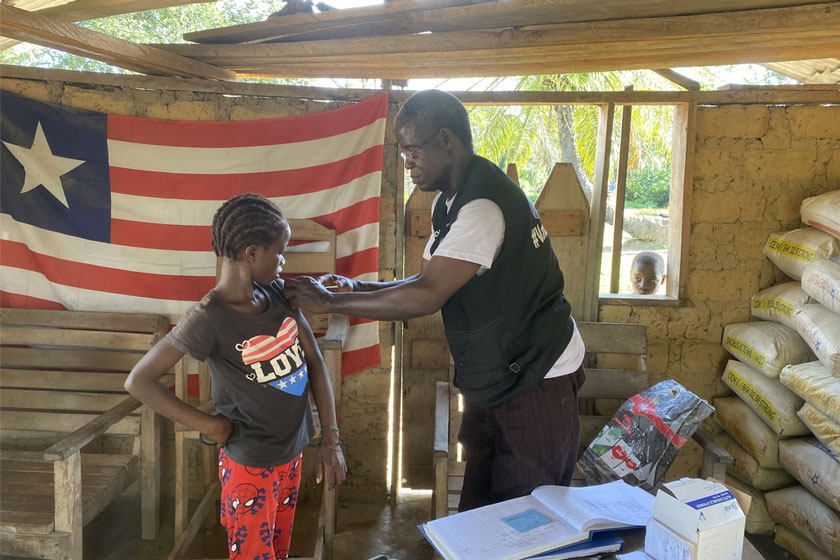How the mpox vaccine has changed lives – and minds – in Kinshasa
Nobody in the DRC’s hard-hit capital wants to relive the fear of the epidemic’s apex.
- 10 November 2025
- 4 min read
- by Yanne Mbiyavanga

In the Democratic Republic of the Congo’s capital city, Kinshasa, memories of the peak of the mpox epidemic are still fresh. In some neighbourhoods, people recall the cries, the marked faces and the long days of fear.
Today, the situation has eased: cases have dropped, and life has resumed its rhythm. But in health centres, teams continue an essential mission, administering doses of the vaccine to protect those most exposed.
“I’ve been a vaccinator for over five years, but it was my first time working on a mpox campaign,” says Adelon Kweyinatabia Mondo, head nurse of the Kinkenda/Camp Luka health area in Kinshasa’s Ngaliema commune. The disease spread quickly enough to be its own awareness campaign, said Adelon. “Despite the lack of megaphones, batteries, and sometimes even vaccines, people accepted the shot because they had seen the disease with their own eyes.”
A year of vaccination
Launched on 14 November 2024, the mpox vaccination campaign, coordinated by the Expanded Programme on Immunization (EPI) with support from the Ministry of Health, WHO, Gavi, the Vaccine Alliance, MSF and UNICEF, marked a decisive step in the fight against the disease.
The jab, used in a single dose, was targeted to three priority groups: contacts of confirmed cases, frontline health workers, and communities at higher risk of exposure.
According to the EPI, more than 454,000 people have been vaccinated in Kinshasa.
Getting that done required help from a broad alliance, including Gavi, which both procured doses, and provided funding for the cost of administering the vaccines. But ultimately, getting vaccines delivered relied on the population’s willingness to step up.
Uptake was strong, despite the rumours about the vaccine that circulated. “What made the difference was the awareness and the fact that people had lived through the disease,” said Adelon.
Today, vaccination continues, focusing on at-risk areas, and at-risk groups including healthcare workers to consolidate the progress achieved during the first phase. The numbers tell a hopeful story, with the number of cases reportedly heading into decline.
From fear to trust
When mpox struck Kinshasa Djack Efomi, a young entrepreneur, never imagined he would be among the patients. He was on a retreat at a local evangelical church when he fell ill.
“I was in the presence of God… Then someone said: ‘Look at your face, there are spots.’ That’s when I realised it wasn’t just a fever,” he recalls.
Isolated for weeks in an overwhelmed health facility, he remembers the harsh conditions – lack of water, food, and the constant fear of dying.
“Every night, people died. You’d sleep next to someone, and in the morning, they were gone. Being alive is grace,” he says softly. Between 2024 and 2025, a suspected total of 2,092 people died of mpox in the DRC, according to the Africa Centres for Disease Control.
Like many survivors, Djack faced stigma following his recovery. The ordeal is one he’d prefer not to repeat. “If this vaccine can keep someone from going through what I lived, then they should take it.”

“People saw the danger”
Across the capital, this renewed trust in vaccination – and not just in the mpox jab – becoming visible in communities.
“People saw the danger; they saw the disease,” explained a health worker from La Croyance Health Centre in Mont-Ngafula. They also saw the difference the vaccine made. “Even though our clinic didn’t administer the mpox vaccine, only cholera, people now listen, they come forward, and hygiene habits have improved again.”
Community outreach and the media played a key role in shifting public perception, the health worker added. Residents no longer want to relive the fear of 2024.
Logistical hiccups
Still, teams working on the ground did not have an easy task. Shortages of vaccines, missing communication tools, and even batteries for megaphones – all these details slowed operations, even if they did not manage to derail the campaign.
“Since the vaccine is injectable, it requires a fixed and well-organised strategy,” says vaccinator Adelon Kweyinatabia Mondo. “But despite everything, people showed up. They wanted to be protected”.
These challenges highlighted a deeper issue: the need for sustained coordination and follow-up. The current strategy, centred on booster doses and health worker protection, reflects a shift toward a more sustainable response.
According to the EPI, these efforts aim to consolidate progress and prevent resurgence. Humanitarian actors, meanwhile, stress the importance of maintaining community communication to preserve trust and vigilance. “What has changed is the perception,” summarised an EPI official. “Before, people doubted. Today, they understand that prevention saves lives.”
Have you read?
Quiet resilience
“What I went through, I can’t tell it all,” says Djack, his voice calm. In Kinshasa, mpox has left scars on minds, as well as bodies.
Yet, hope has slowly rebuilt itself. Health workers continue on their mission quietly and steadily, while residents, once sceptical, increasingly recognise the value of vaccination.
Beyond the statistics, the mpox vaccine campaign has become a symbol of collective resilience – and evidence of the strength of a people who, despite hardship and fear, choose life.





